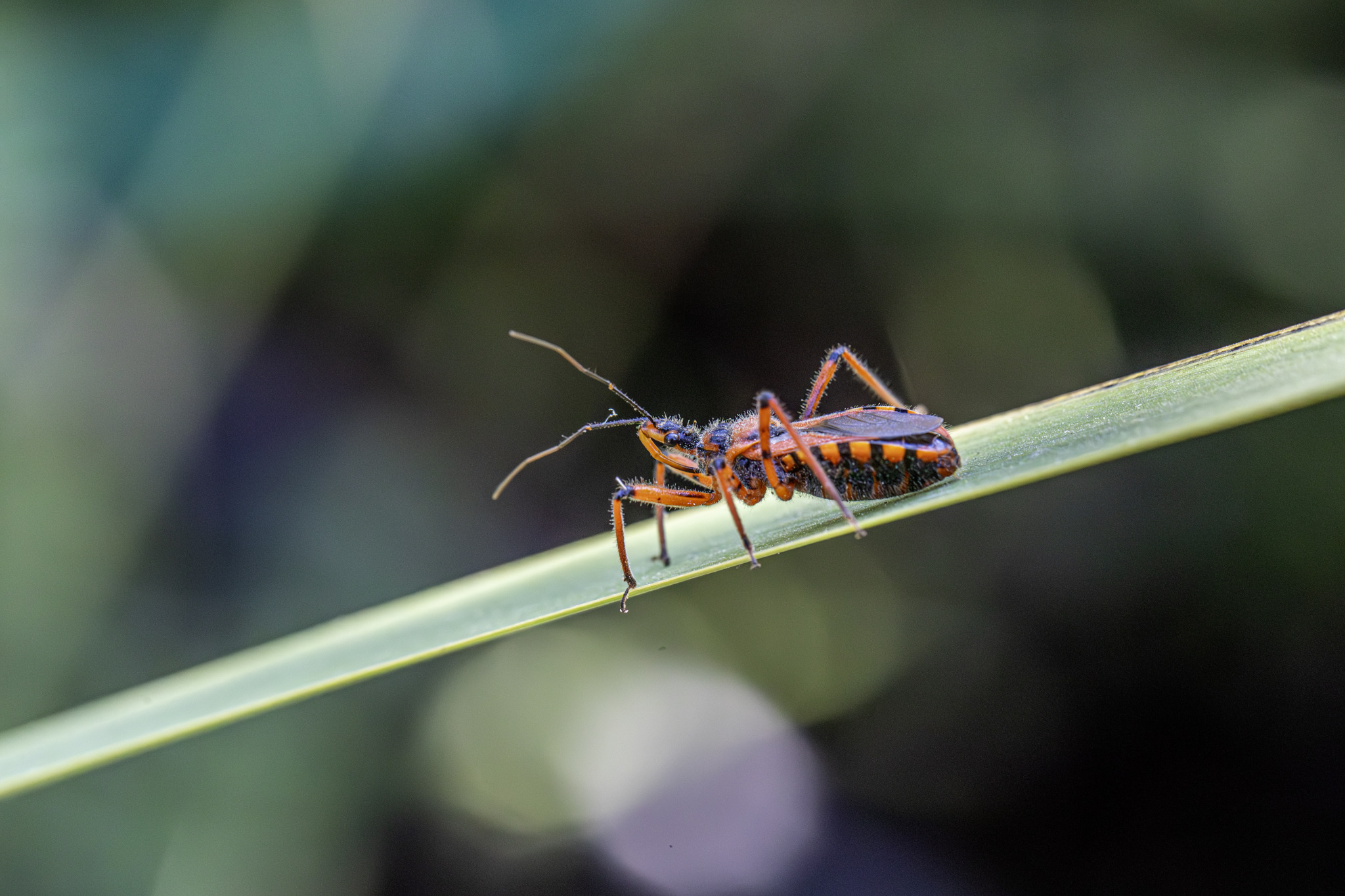The Assassin Bug (Rhynocoris ventralis) is a predatory insect known for its striking appearance and lethal hunting techniques. Belonging to the family Reduviidae, this bug is a formidable hunter, often preying on other insects.
Description
- Size:
- The Rhynocoris ventralis typically measures about 10 to 15 millimeters in length.
- Appearance:
- Body: The body is elongated and somewhat flattened, with a distinct separation between the thorax and the abdomen.
- Coloration: This species is particularly recognizable by its vivid colors. It usually has a red and black pattern on its body, with red often dominating the upper parts, while the legs and antennae are black. The contrasting colors serve as a warning to potential predators.
- Legs: The legs are long and slender, adapted for quickly grasping prey.
- Proboscis:
- Like other assassin bugs, Rhynocoris ventralis possesses a long, curved proboscis that it uses to pierce the exoskeleton of its prey and inject a toxic saliva. This saliva liquefies the internal tissues of the prey, which the bug then sucks out.
Behavior and Ecology
- Habitat:
- Rhynocoris ventralis is typically found in warmer regions and prefers habitats with plenty of vegetation where it can hunt and ambush prey. It is often seen in gardens, forests, and meadows.
- Diet:
- As a predatory insect, it primarily feeds on other small invertebrates, such as caterpillars, beetles, and other bugs. It is considered a beneficial insect in agriculture because it helps control pest populations.
- Hunting:
- This assassin bug is an ambush predator, often lying in wait for its prey or slowly stalking it. Once close enough, it strikes rapidly with its proboscis, delivering a fatal injection of enzymes that immobilize and digest the prey.
Life Cycle
- Reproduction:
- Females lay eggs on plants or in the soil, where they hatch into nymphs. The nymphs resemble small, wingless adults and go through several molts before reaching maturity.
- Development:
- The development from nymph to adult involves several stages, each stage called an instar. During these stages, the nymphs gradually develop the features of an adult, including wings.
Defensive Mechanisms
- Aposematism:
- The bright coloration of Rhynocoris ventralis serves as a warning to potential predators that it is toxic or dangerous, a strategy known as aposematism.
- Aggression:
- While primarily defensive, the species is known to be aggressive if threatened. It can use its proboscis to deliver a painful bite to predators or humans who handle it carelessly.
Importance in Ecosystem
- Pest Control:
- Rhynocoris ventralis plays an important role in controlling pest populations, making it a beneficial insect for gardeners and farmers.
- Biodiversity Indicator:
- The presence of assassin bugs like Rhynocoris ventralis in an ecosystem often indicates a healthy and diverse environment.
Summary
The Assassin Bug (Rhynocoris ventralis) is a remarkable predator within the insect world, known for its vivid coloration, aggressive hunting style, and role in natural pest control. While it is a fearsome hunter among insects, it is also a valuable ally in maintaining ecological balance. Its presence in an environment signals a healthy ecosystem, where it contributes to the regulation of other insect populations.
Visited 102 times, 27 visit(s) today
Views: 157
Subscribe to the newsletter:
